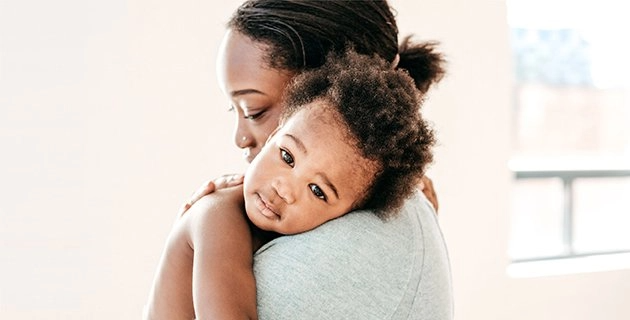Welcoming a new baby into your life is a joyous occasion, but it can also come with challenges, including your baby's first cold or flu.
Infants are particularly vulnerable to viruses, and recognizing the signs early can help you provide the best care. In this guide, we will explore how to differentiate between cold or flu symptoms in babies, effective remedies tailored for infants, and when it's essential to seek medical attention. With the right knowledge and support, you can help your little one feel more comfortable during this time. Always ask your own child's pediatrician if you have any specific questions or concerns.
Is It a Cold or Flu? Recognizing the Signs in Infants
When your tiny one shows signs of illness, it can be challenging to determine whether they are experiencing a common cold or the flu. Here’s a breakdown:
Common Cold Symptoms in Infants and Babies
Common cold symptoms in babies often include a runny or stuffy nose, mild cough, and sneezing. Your little one’s nasal discharge may be clear at first, but might thicken and turn yellow or green over time.
You might also notice your child has a low-grade fever, decreased appetite, or is slightly more irritable than usual. These symptoms typically develop gradually and are usually mild, allowing your baby to continue their daily activities.[1,2,3]
Flu Symptoms in Infants and Babies
On the other hand, flu in babies can manifest as more severe symptoms that come on suddenly. Look for signs such as a fever (above 100.4° Fahrenheit), chills, severe cough, body aches, fatigue, and even vomiting or diarrhea.
Infants may also experience a loss of appetite and exhibit unusual fussiness. If your child shows any combination of these symptoms, it’s essential to monitor their condition closely.[4,5]
Regardless of whether it’s a cold or the flu, keeping your child comfortable is key. Always consult your pediatrician if you have concerns, especially if symptoms worsen or persist.
Cold and Flu Symptom Strategies and Tips for Infants and Babies
Congestion Relief for Babies
One common issue during a cold is nasal congestion. To help relieve congestion in infants, consider using a cool mist humidifier in their room. The moist air can soothe irritated nasal passages and make it easier for your baby to breathe.
Additionally, gentle saline nasal drops can help thin and clear mucus without the need for invasive measures. You can also use something like a bulb syringe to pull fluid from your baby's nose, or a wet cotton swab to gently wipe around the nose for stickier, more stubborn mucus.[6]
Keep Your Baby and Infant Hydrated
Hydration is crucial when your baby is under the weather. Offer your little one plenty of fluids, such as breast milk or formula. If your child is over 6 months — and your healthcare provider has cleared it — you may also offer small sips of water. Watch carefully for signs of dehydration like very little or no tears when crying, fewer than 6 diapers per day, a dry/sticky mouth or a sunken soft spot on the baby's head. If your baby shows any of these signs, call your doctor.[7]
Cold and Flu Symptom Medicine for Infants and Babies
When it comes to medication, always consult your doctor before dispensing anything to your little one. Many over-the-counter cold and flu medications may not be appropriate for your child. Instead, your healthcare provider may recommend options tailored to your baby's age and weight, like infant fever medicines such as Infants’ TYLENOL® Dye Free Oral Suspension.
Natural remedies can help — think cool compresses to keep them comfortable and combat fever, staying hydrated, and getting plenty of rest — combined with supportive care like cuddles and infant-specific medications cleared by your pediatrician.[8]
When to Seek Medical Attention
Knowing when to seek medical attention for your baby’s first cold or flu is crucial. Immediate medical care is necessary if your child shows signs of:
Difficulty breathing
Fever over 100.4°F or any fever in infants under three months
Dehydration (decreased urination or a dry mouth)
Unusual lethargy or irritability
If your baby misses 2 or more feedings in a row
Even with mild symptoms, consult a pediatrician if you have concerns, especially if your baby is under three months old, has a fever lasting more than a couple of days, or if symptoms worsen or don’t improve after a few days.
Other symptoms that require immediate medical evaluation include a rash with fever or persistent vomiting. Trust your instincts as a caregiver; if something feels off, seek help promptly. Early intervention can significantly aid your child’s recovery.[9]



